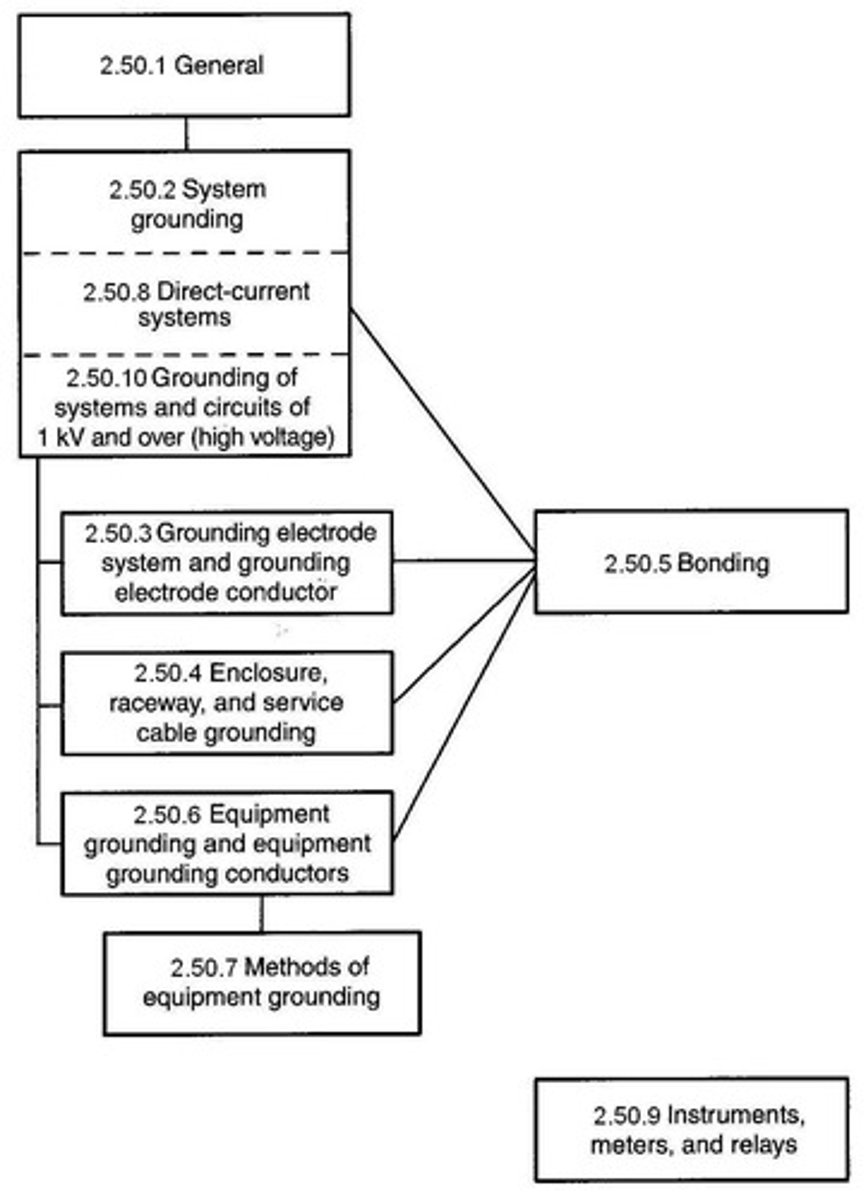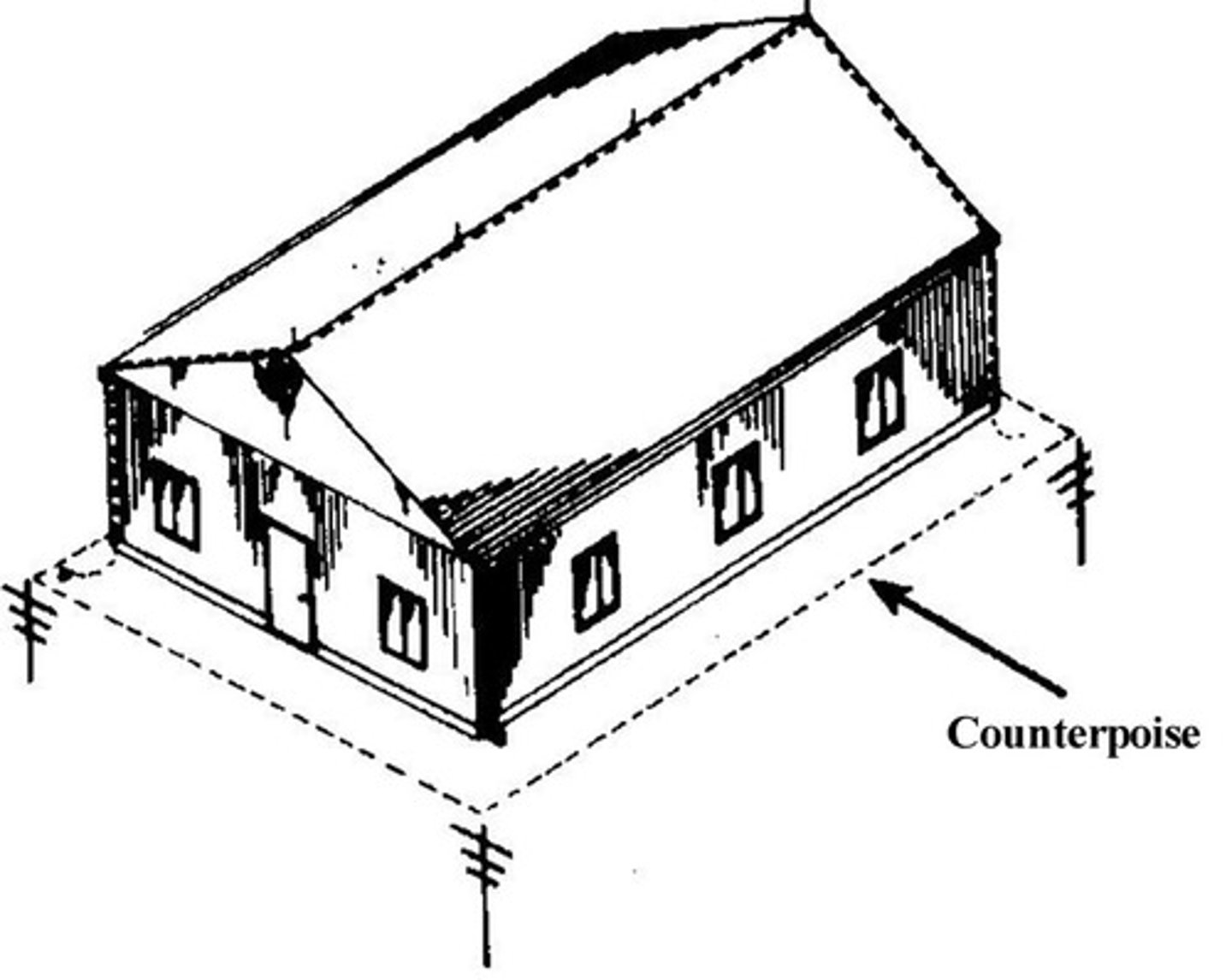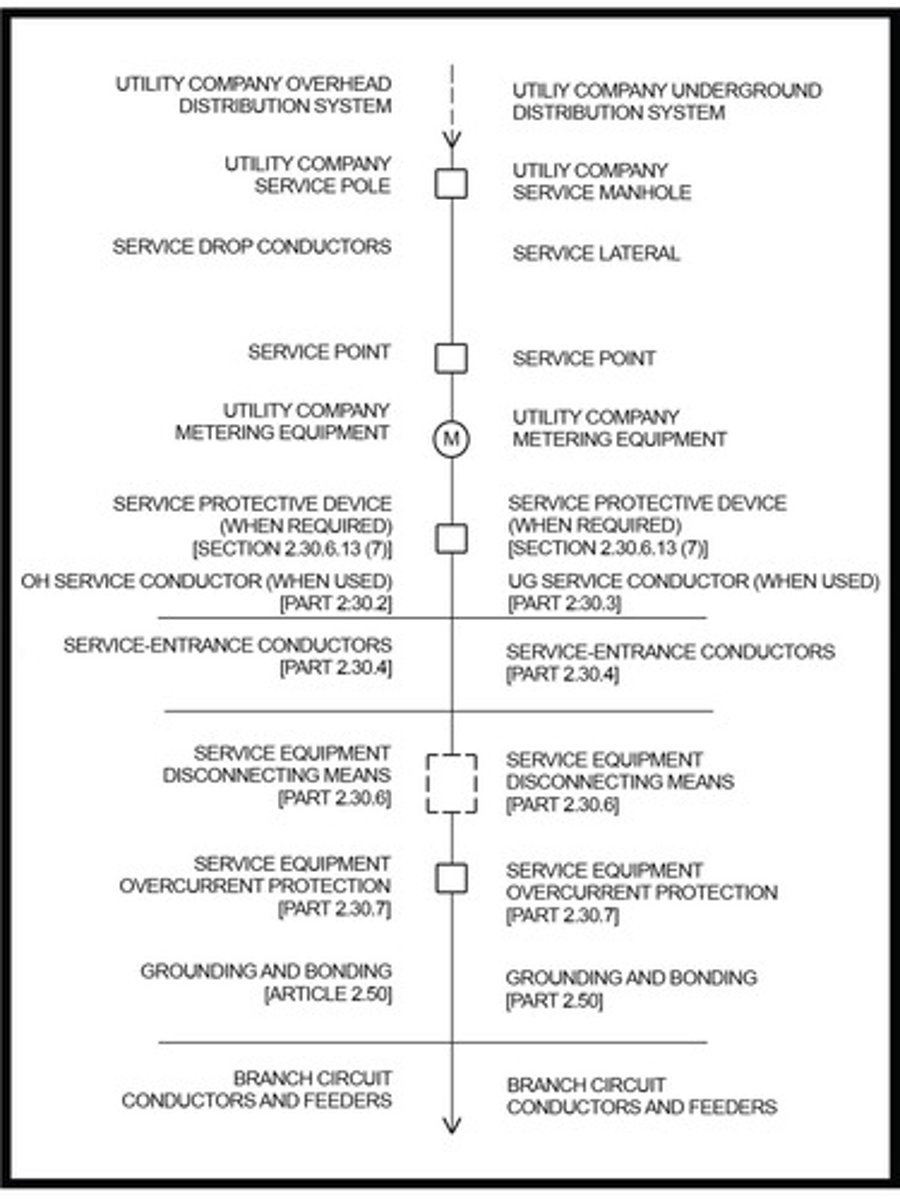Grounded Conductors and Branch Circuits Overview
1/536
There's no tags or description
Looks like no tags are added yet.
Name | Mastery | Learn | Test | Matching | Spaced |
|---|
No study sessions yet.
537 Terms
Grounded Conductor
Conductor intentionally connected to ground for safety.

Neutral Conductor
Carries current back to the source in circuits.
Identification of Terminals
Labeling terminals for circuit identification purposes.
Multiple Circuits
More than one circuit sharing a common enclosure.
Wire Markers
Labels used to identify conductors in enclosures.
Cable Ties
Fasteners used to group wires together.
Ungrounded Circuit Conductor
Conductor not connected to ground.
Insulated Grounded Conductor
Grounded conductor with insulation for safety.
Continuous White Finish
Outer finish indicating a grounded conductor.
Continuous Gray Finish
Alternative outer finish for grounded conductors.
Three Continuous Stripes
Marking method for identifying grounded conductors.
Colored Tracer Threads
Threads indicating manufacturer on insulated wires.
Mineral-Insulated Cable
Cable type requiring distinctive marking at installation.
Sunlight-Resistant Cable
Cable designed for outdoor use in photovoltaic systems.
Distinctive Marking
Unique identification for specific conductor types.
Electrical Connection
Connection capable of carrying current between systems.
Grounding Electrode Conductor
Conductor connecting grounding system to ground.

Equipment Grounding Conductor
Conductor ensuring safety by grounding equipment.

Photovoltaic Power Systems
Systems generating electricity from solar energy.

Fixture Wire
Wire used for connecting fixtures in circuits.
Aerial Cable Identification
Identification requirements for aerial cable installations.
Exception for Grouping
Conditions under which grouping rules do not apply.
Continuity Requirement
Grounded conductor's continuity must not rely on enclosures.
Grounded Conductor
A conductor intentionally connected to ground.
22 mm² Size
Minimum size for insulated grounded conductors.
Continuous White Finish
Identification method for grounded conductors.
Continuous Gray Finish
Alternative identification for grounded conductors.
Three White Stripes
Marking method for grounded conductors on insulation.
Distinctive Marking
White or gray marking at conductor terminations.
Flexible Cord Identification
Grounded conductor in flexible cord marked white/gray.
Grounded Circuit Conductor
Conductor used exclusively for grounding purposes.
Outer Covering
Insulation layer identifying grounded conductors.
Different Systems Identification
Distinguishing grounded conductors from various systems.
Circuits Less Than 50 Volts
Grounding requirements for low-voltage circuits.
Circuits 50 Volts or More
Identification rules for higher voltage grounded conductors.
Marking Tape
Used for reidentifying conductors as ungrounded.
Painting
Method for marking conductors' identification.
Termination Marking
Marking at the end of a conductor.
Ungrounded Conductor
Conductor not intentionally connected to ground.
Reidentified Conductor
Conductor marked to indicate its new function.
Color Coding
Using colors for conductor identification.
Insulation Stripes
Visual markers for identifying conductor type.
Grounded Conductor Requirements
Standards for grounding conductors in installations.
Conductors Visibility
Requirement for accessible identification of conductors.
Documentation of Identification
Record-keeping for conductor identification methods.
Insulated Grounded Conductors
Conductors identified by white or gray finish.
Multiconductor Cable
Cable with multiple conductors, minimum 22 mm².
External Ridge
Feature on grounded conductor for identification.
Flexible Cord
Cord with one conductor for appliance connection.
Screw Shell Devices
Devices with leads, grounded conductor marked white/gray.
Grounded Conductor
Conductor connected to ground for safety.
Terminal Identification
Terminals for grounded conductors marked white.
Single-Pole Switch
Switch controlling one circuit path.
Overcurrent Device
Device protecting against excessive current flow.
Appliance Connection
Method for connecting appliances to circuits.
Distinctive White Marking
Used for identifying grounded conductors.
Polarity of Connections
Grounded conductor must not reverse polarity.
Device Terminals
Terminals for connecting multiple circuit sides.
Normal Current Rating
Rated current for devices over 30 amperes.
Specific-Purpose Branch Circuits
Circuits for specific equipment applications.
Air-Conditioning Equipment
Equipment referenced for specific circuit requirements.
Three Continuous Stripes
Alternative identification for grounded conductors.
Readily Distinguishable Color
Color differing from white/gray for terminals.
Qualified Persons
Individuals trained to handle electrical installations.
Maintenance and Supervision
Conditions ensuring safe electrical system management.
Table 2.10.1.3
Lists references for specific equipment circuits.
Receptacles
Devices for connecting electrical equipment to power.
Polarized attachment plugs
Plugs designed to prevent incorrect connections.
Grounded conductor
Conductor connected to the earth for safety.
Identification means
Methods to mark or code electrical conductors.
Multiwire branch circuits
Circuits with multiple conductors from one panel.
Color coding
Using colors to identify electrical conductors.
Marking tape
Tape used for labeling electrical components.
Disconnecting means
Device to simultaneously disconnect all ungrounded conductors.
Line-to-neutral loads
Loads connected between line and neutral conductors.
Ungrounded conductors
Conductors not connected to the ground.
Screw shells
Devices with screw connections for electrical terminals.
Branch circuits
Circuits that distribute power from a panel.
Fixed electric heating equipment
Permanent installations for electric heating.
Infrared lamp industrial heating
Heating using infrared lamps in industrial settings.
Panelboards
Distribution boards for electrical circuits.
Busways
Metal conduits for distributing electrical power.
Durability of labels
Labels must withstand environmental conditions.
Voltage system identification
Marking systems to distinguish different voltage levels.
Exception for existing installations
Rules for marking new systems in old setups.
Grounded conductor identification
Marking grounded conductors for safety compliance.
Branch-circuit overcurrent device
Device protecting circuits from overloads.
FPN (Fine Print Note)
Additional notes providing clarification on regulations.
Ungrounded Conductors
Conductors not connected to ground or earth.
Identification Methods
Techniques for marking ungrounded conductors.
Branch Circuits
Electrical circuits supplying power to outlets.
Current Systems
Electrical systems providing power at specific voltages.
Polarity Identification
Marking conductors to indicate positive or negative.
22 mm2 Conductor
Conductor size requiring polarity marking for identification.
14 mm2 Conductor
Smaller conductor size with specific identification rules.
Termination Points
Locations where conductors connect to devices.
Connection Points
Junctions where conductors join other conductors.
Splice Points
Areas where conductors are joined together.
Positive Polarity
Indicates the positive side in a DC system.
Nominal Voltage System
System with standard voltage ratings for circuits.